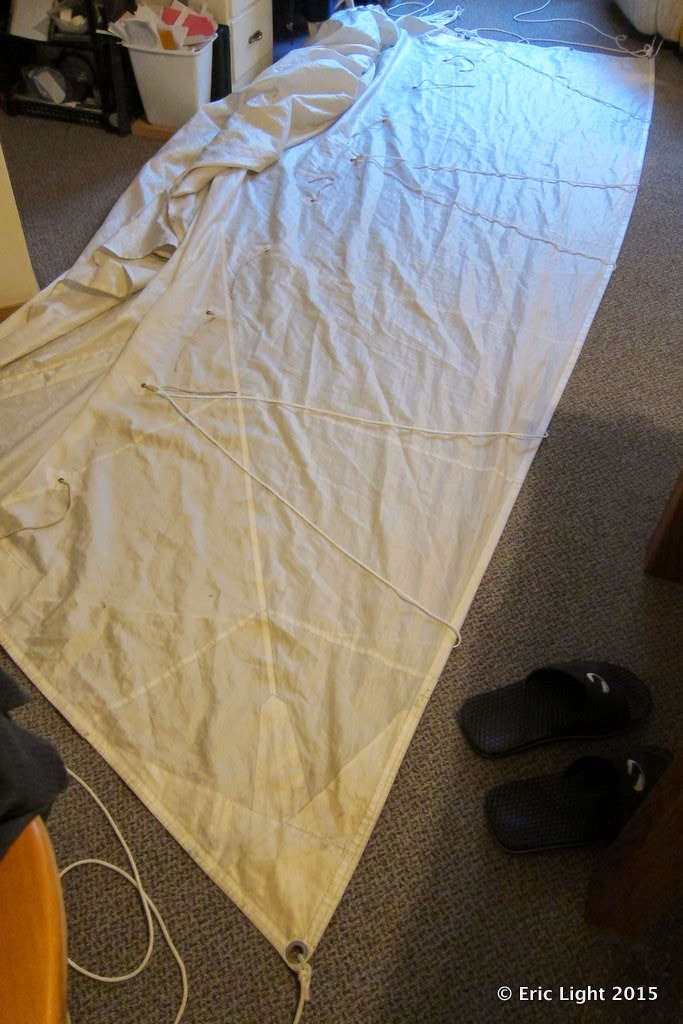Firefly is a very stable boat, however she is also a dinghy at heart.
I've gone forward when sailing in a light breeze, hanging on to the handrails, and even then it was a little scary. With a gust of wind and an unpredicted wave, one could easily be in the drink. I would not want to be attempting to tie in the reef points on the fore part of the mainsail that I can't reach from the cockpit, in conditions that called for the reef in the first place.
Maybe this has as much to do with the weather being wet and cool right now, but I've decided to try brailing the foot of the main. I'm sure that the jiffy reef system that I've set up will take care of the reef for the most part; I just don't like the idea of the foot of the sail flapping around adding to the confusion and possibly getting caught on something when tacking.
So I tied eyes into some of the reef points for a brailing line to go through:
Ideally the line would go through the sail to the other side, but I'm not ready to make holes in the sail just yet! So the line comes up to a reef point on one side then down and up to a reef point on the other side:
Note that the loop behind the sail to the right is in the wrong spot: I ended up moving it one reef point to the right. Here's the tack (still wrong on the back):
And here's the clew:
I'll be pulling the brailing line from the clew so that the foot gets minimized:
Something I noticed is that when I put the sail away, the brailing loops can slip off the ends of the sail. In a video of sailing barges that Robin pointed me to, I noticed that they had loops on the sail to contain the brailing line, so I'll probably do that as well.
| http://youtu.be/b3wYcn0vG54 |
The sailing barges brail their sails horizontally, to bring the leech in to the luff, whereas I'll be brailing vertically to bring the foot up to the reef points.




















